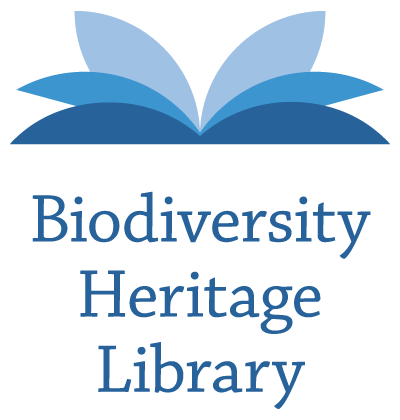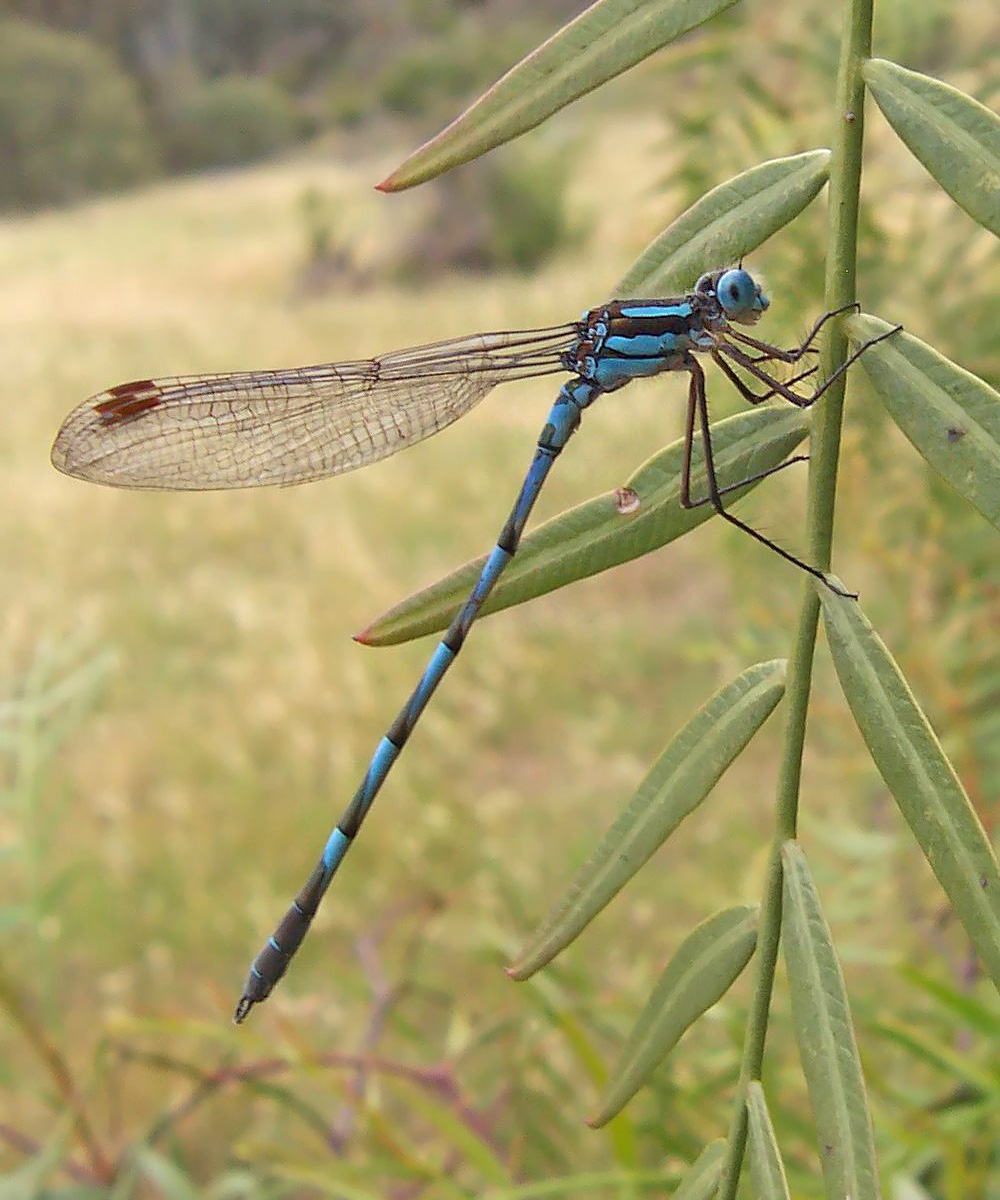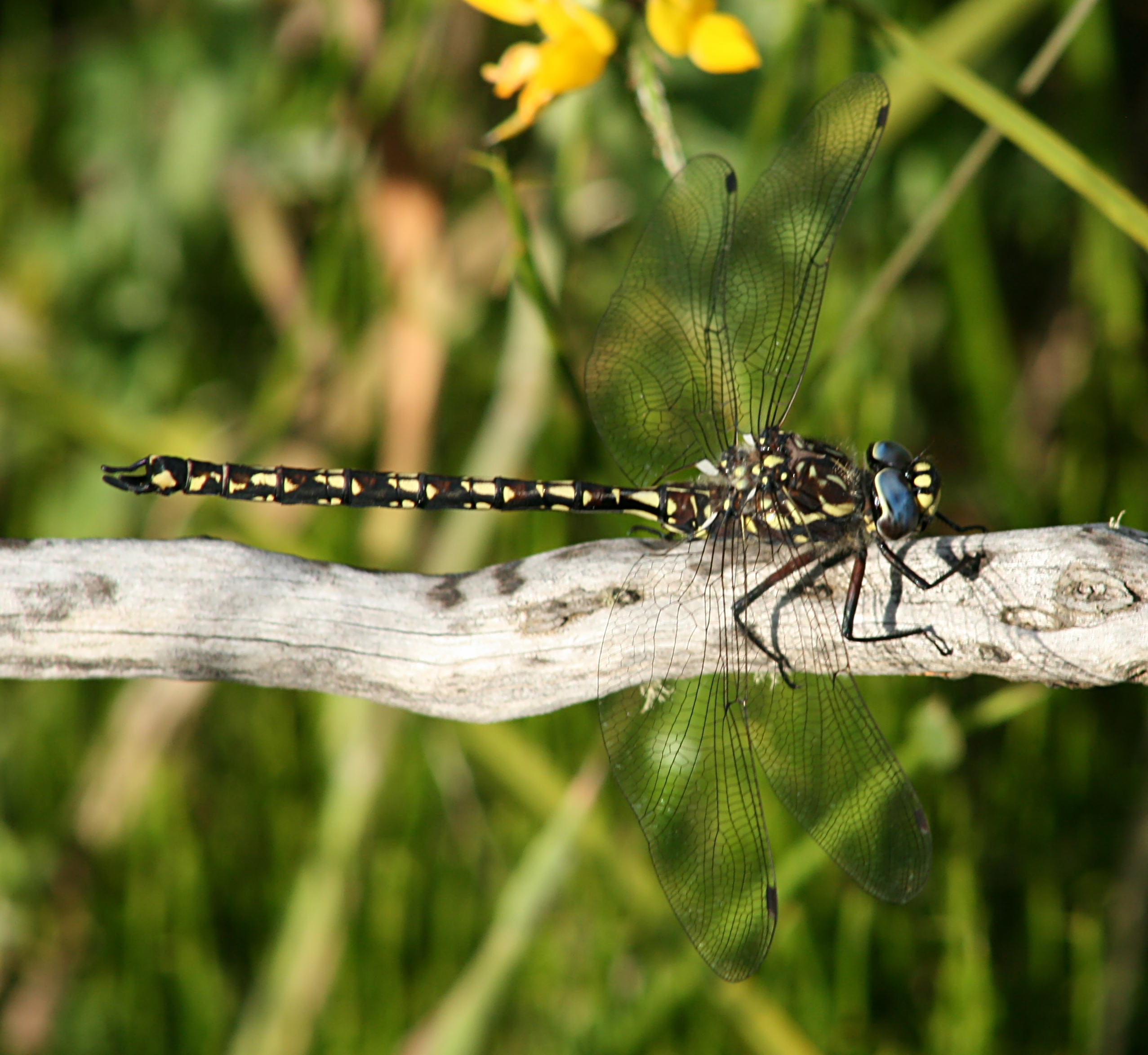|
Austrophlebia Costalis
''Austrophlebia costalis'', the southern giant darner, is a species of dragonfly in the family Telephlebiidae endemic to eastern Australia. ''Austrophlebia costalis'' is an enormous dark dragonfly with strong yellow markings on its body and a brown band along the leading edge of its wings. It inhabits streams and may be found on logs in shady areas. This species is believed to be one of the fastest flying odonates, with an old reference claiming to have clocked one at nearly but no modern confirmation. Gallery Austrophlebia costalis from below (31902785847).jpg , Male from below Austrophlebia costalis head (31902786697).jpg , Male head Austrophlebia costalis female wings (34208948704).jpg, Female wings Austrophlebia costalis male wings (34208974174).jpg, Male wings See also * List of Odonata species of Australia This is a list of species of damselflies and dragonflies recorded in Australia. Common names of species are linked, beside their scientific names. The list ... [...More Info...] [...Related Items...] OR: [Wikipedia] [Google] [Baidu] |
Robert John Tillyard
Robert "Robin" John Tillyard FRS (31 January 1881 – 13 January 1937) was an English–Australian entomologist and geologist. Early life and education Tillyard was the son of J. J. Tillyard and his wife Mary Ann Frances, née Wilson and was born at Norwich, Norfolk. He was educated at Dover College and intended to enter the army but was rejected on account of having suffered from rheumatism. He won a scholarship for classics at Oxford and another for mathematics at Cambridge, and decided to go to Queens' College, Cambridge. He graduated senior optime in 1903. He went to Australia in 1904 and was appointed second mathematics and science master at Sydney Grammar School. While working as a science master Tillyard found time to publish extensively on dragonflies. After nine years with Sydney Grammar School, he resigned and undertook a research degree in biology at Sydney University and took his research BSc degree in 1914. Career He was seriously injured in a railway accident ... [...More Info...] [...Related Items...] OR: [Wikipedia] [Google] [Baidu] |
Biodiversity Heritage Library
The Biodiversity Heritage Library (BHL) is the world’s largest open access digital library for biodiversity literature and archives. BHL operates as worldwide consortiumof natural history, botanical, research, and national libraries working together to address this challenge by digitizing the natural history literature held in their collections and making it freely available for open access as part of a global “biodiversity community.” The BHL consortium works with the international taxonomic community, publishers, bioinformaticians, and information technology professionals to develotools and servicesto facilitate greater access, interoperability, and reuse of content and data. BHL provides a range of services, data exports, and APIs to allow users to download content, harvest source data files, and reuse materials for research purposes. Through taxonomic intelligence tools developed bGlobal Names Architecture BHL indexes the taxonomic names throughout the collection, allowing ... [...More Info...] [...Related Items...] OR: [Wikipedia] [Google] [Baidu] |
Dragonfly
A dragonfly is a flying insect belonging to the infraorder Anisoptera below the order Odonata. About 3,000 extant species of true dragonfly are known. Most are tropical, with fewer species in temperate regions. Loss of wetland habitat threatens dragonfly populations around the world. Adult dragonflies are characterized by a pair of large, multifaceted compound eyes, two pairs of strong, transparent wings, sometimes with coloured patches, and an elongated body. Many dragonflies have brilliant iridescent or metallic colours produced by structural colouration, making them conspicuous in flight. An adult dragonfly's compound eyes have nearly 24,000 ommatidia each. Dragonflies can be mistaken for the closely related damselflies, which make up the other odonatan infraorder ( Zygoptera) and are similar in body plan though usually lighter in build; however, the wings of most dragonflies are held flat and away from the body, while damselflies hold their wings folded at rest, along or ... [...More Info...] [...Related Items...] OR: [Wikipedia] [Google] [Baidu] |
Telephlebiidae
Telephlebiidae is a family of dragonflies endemic to eastern and south-western Australia. They are medium-sized to very large dragonflies, generally found around streams. The family Telephlebiidae is not recognised in the World Odonata List at the Slater Museum of Natural History, but rather its species are considered to be part of the Aeshnidae The Aeshnidae, also called aeshnids, hawkers, or darners, is a family of dragonflies. The family includes the largest dragonflies found in North America and Europe Europe is a large peninsula conventionally considered a continent in its o ... family. Genera The family includes the following genera: * '' Acanthaeschna'' * '' Antipodophlebia'' * '' Austroaeschna'' * '' Austrophlebia'' * '' Dromaeschna'' * '' Notoaeschna'' * '' Spinaeschna'' * '' Telephlebia'' References {{Taxonbar, from=Q12005436 Odonata families Odonata of Australia Endemic fauna of Australia Insects described in 1913 ... [...More Info...] [...Related Items...] OR: [Wikipedia] [Google] [Baidu] |
Australian Faunal Directory
The Australian Faunal Directory (AFD) is an online catalogue of taxonomic and biological information on all animal species known to occur within Australia. It is a program of the Department of Climate Change, Energy, the Environment and Water of the Government of Australia. By May 12, 2021, the Australian Faunal Directory has collected information about 126,442 species and subspecies In biological classification, subspecies is a rank below species, used for populations that live in different areas and vary in size, shape, or other physical characteristics (morphology), but that can successfully interbreed. Not all species .... It includes the data from the discontinued ''Zoological Catalogue of Australia'' and is regularly updated. Started in the 1980s, it set a goal to compile a "list of all Australian fauna including terrestrial vertebrates, ants and marine fauna" and create an "Australian biotaxonomic information system".''Commonwealth Record'', Volume 5, Issues 26-34, p. 1 ... [...More Info...] [...Related Items...] OR: [Wikipedia] [Google] [Baidu] |
Australian Biological Resources Study
Australian Biological Resources Study (ABRS) is a project undertaken by Parks Australia Division of Australia's Department of the Environment, Water, Heritage and the Arts (DEWHA). Background ABRS was founded in 1973 from the recommendations of a 1972 Senate Select Committee report on Wildlife Conservation. Its purpose is to collate from the many libraries, museums and other collections the taxonomy of Australia's estimated 2 million species of flora and fauna, including aquatic species. These represent almost 20% of the earth's biodiversity, 80% of which are unique to Australia. ABRS has undertaken active funding for taxonomic research of Australia's biodiversity and is internationally recognised for its extensive data bases and publications. Publications The most important outputs of the ABRS has been the publication of the multi-volume ''Flora of Australia'' and '' Fauna of Australia'' series. Other output includes ''The Banksia Atlas'' and the "Platypus" database pa ... [...More Info...] [...Related Items...] OR: [Wikipedia] [Google] [Baidu] |
Endemism
Endemism is the state of a species being found in a single defined geographic location, such as an island, state, nation, country or other defined zone; organisms that are indigenous to a place are not endemic to it if they are also found elsewhere. For example, the Cape sugarbird is found exclusively in southwestern South Africa and is therefore said to be ''endemic'' to that particular part of the world. An endemic species can be also be referred to as an ''endemism'' or in scientific literature as an ''endemite''. For example '' Cytisus aeolicus'' is an endemite of the Italian flora. '' Adzharia renschi'' was once believed to be an endemite of the Caucasus, but it was later discovered to be a non-indigenous species from South America belonging to a different genus. The extreme opposite of an endemic species is one with a cosmopolitan distribution, having a global or widespread range. A rare alternative term for a species that is endemic is "precinctive", which applies to ... [...More Info...] [...Related Items...] OR: [Wikipedia] [Google] [Baidu] |
Odonata
Odonata is an order of flying insects that includes the dragonflies and damselflies. Members of the group first appeared during the Triassic, though members of their total group, Odonatoptera, first appeared in Late Carboniferous. The two common groups are distinguished with dragonflies, placed in the suborder Epiprocta, usually being larger, with eyes together and wings up or out at rest, while damselflies, suborder Zygoptera, are usually smaller with eyes placed apart and wings along body at rest. All Odonata have aquatic larvae called naiads (nymphs), and all of them, larvae and adults, are carnivorous. The adults can land, but rarely walk. Their legs are specialised for catching prey. They are almost entirely insectivorous. Etymology and terminology Fabricius coined the term ''Odonata'' in 1793 from the Ancient Greek ( Ionic form of ) 'tooth'. One hypothesis is that it was because their maxillae are notably toothed. Most insects also have toothed mandibles. The wo ... [...More Info...] [...Related Items...] OR: [Wikipedia] [Google] [Baidu] |
List Of Odonata Species Of Australia
This is a list of species of damselflies and dragonflies recorded in Australia. Common names of species are linked, beside their scientific names. The list is split into two groups: damselflies (suborder Zygoptera) and other dragonflies (infraorder Anisoptera). Those groups are organized in Families and then Genera and Species. Zygoptera (damselflies) Coenagrionidae genus: '' Aciagrion'' :* Blue slim, ''Aciagrion fragilis'' genus: '' Agriocnemis'' :* Silver wisp, ''Agriocnemis argentea'' :* Tropical wisp, ''Agriocnemis dobsoni '' :* Pilbara wisp, ''Agriocnemis kunjina '' :* Pygmy wisp, ''Agriocnemis pygmaea'' :* Red-rumped wisp, ''Agriocnemis rubricauda'' :*'' Agriocnemis thoracalis'' genus: '' Archibasis'' :* Blue-banded longtail, ''Archibasis mimetes '' genus: '' Argiocnemis'' :* Red-tipped shadefly, ''Argiocnemis rubescens '' genus: '' Austroagrion'' :* South-western billabongfly, ''Austroagrion cyane '' :* Northern billabongfly, ''Austroagrion exclamationis '' :* ... [...More Info...] [...Related Items...] OR: [Wikipedia] [Google] [Baidu] |
Odonata Of Australia
Odonata is an order of flying insects that includes the dragonflies and damselflies. Members of the group first appeared during the Triassic, though members of their total group, Odonatoptera, first appeared in Late Carboniferous. The two common groups are distinguished with dragonflies, placed in the suborder Epiprocta, usually being larger, with eyes together and wings up or out at rest, while damselflies, suborder Zygoptera, are usually smaller with eyes placed apart and wings along body at rest. All Odonata have aquatic larvae called naiads (nymphs), and all of them, larvae and adults, are carnivorous. The adults can land, but rarely walk. Their legs are specialised for catching prey. They are almost entirely insectivorous. Etymology and terminology Fabricius coined the term ''Odonata'' in 1793 from the Ancient Greek ( Ionic form of ) 'tooth'. One hypothesis is that it was because their maxillae are notably toothed. Most insects also have toothed mandibles. The wo ... [...More Info...] [...Related Items...] OR: [Wikipedia] [Google] [Baidu] |
Insects Of Australia
Insects (from Latin ') are pancrustacean hexapod invertebrates of the class Insecta. They are the largest group within the arthropod phylum. Insects have a chitinous exoskeleton, a three-part body ( head, thorax and abdomen), three pairs of jointed legs, compound eyes and one pair of antennae. Their blood is not totally contained in vessels; some circulates in an open cavity known as the haemocoel. Insects are the most diverse group of animals; they include more than a million described species and represent more than half of all known living organisms. The total number of extant species is estimated at between six and ten million; In: potentially over 90% of the animal life forms on Earth are insects. Insects may be found in nearly all environments, although only a small number of species reside in the oceans, which are dominated by another arthropod group, crustaceans, which recent research has indicated insects are nested within. Nearly all insects hatch from eg ... [...More Info...] [...Related Items...] OR: [Wikipedia] [Google] [Baidu] |
Endemic Fauna Of Australia
Endemism is the state of a species being found in a single defined geographic location, such as an island, state, nation, country or other defined zone; organisms that are indigenous to a place are not endemic to it if they are also found elsewhere. For example, the Cape sugarbird is found exclusively in southwestern South Africa and is therefore said to be ''endemic'' to that particular part of the world. An endemic species can be also be referred to as an ''endemism'' or in scientific literature as an ''endemite''. For example '' Cytisus aeolicus'' is an endemite of the Italian flora. '' Adzharia renschi'' was once believed to be an endemite of the Caucasus, but it was later discovered to be a non-indigenous species from South America belonging to a different genus. The extreme opposite of an endemic species is one with a cosmopolitan distribution, having a global or widespread range. A rare alternative term for a species that is endemic is "precinctive", which applies to s ... [...More Info...] [...Related Items...] OR: [Wikipedia] [Google] [Baidu] |


.jpg)



